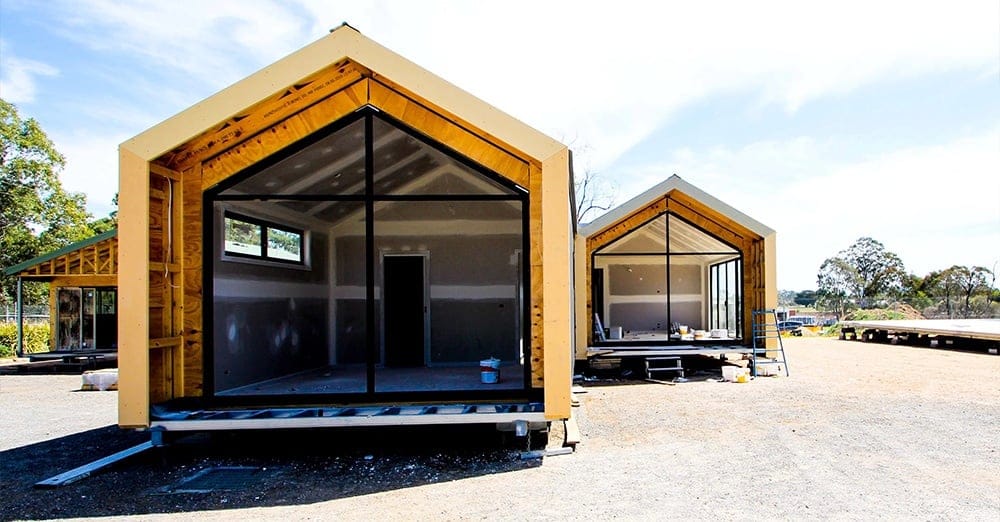
Introduction
Purpose of the Post
Housing is more than just a place to live; it's a fundamental human need and a cornerstone of a stable society. In this post we explore the idea of housing as a social purpose, emphasising the importance of making it affordable for everyone in Australia. We’ll discuss the challenges in the current housing market and why addressing these issues is important for the well-being of all Australians.
Current Housing Market Overview
Australia’s housing market is facing significant challenges. Prices have sky-rocketed in recent years, making it difficult for many Australians to afford a home. High interest rates, economic inflation, and a shortage of available land add to the problem, putting home ownership out of reach for many.
Importance of Affordable Housing
Affordable housing is not just a financial issue; it’s a social one. When people have access to affordable homes, it leads to stronger communities, better health outcomes, and greater economic stability. Regardless of personal beliefs, we can all agree that happy communities are safer communities—after all, everyone desires happiness.

The Concept of Housing as a Social Purpose
Definition and Principles
Housing as a social purpose means viewing homes not just as commodities or investments but as a basic human right.
It’s about ensuring that everyone, regardless of their income, has access to safe, secure, and affordable housing.
The principles behind this concept include equity, where everyone has a fair chance at home ownership or stable renting, and accessibility, where homes are available to people of all economic backgrounds.
Historical Context
The idea of social housing isn’t new. In Australia, social housing programs began in the mid-20th century, aiming to provide low-cost housing to those in need. Over time, these initiatives have evolved, responding to the changing economic landscape and societal needs. However, the demand for affordable housing continues to outstrip supply, leading to the current crisis.
Key Stakeholders
Several groups are involved in the push for affordable housing. The government plays a major role through policies and funding. Developers and builders are pivotal in constructing these homes, while non-profit organisations often advocate for more social housing and support those in need. Finally, the public’s support and understanding of the importance of affordable housing are vital for any initiative to succeed.

The Economic and Social Benefits of Affordable Housing
Economic Stability and Growth
Affordable housing contributes significantly to economic stability. When people have access to affordable homes, they have more disposable income to spend on goods and services, which stimulates the economy. Additionally, affordable housing reduces the need for government spending on emergency shelters, healthcare, and other social services, freeing up resources for other critical areas.
Social Cohesion and Equity
Affordable housing creates stronger communities by ensuring that a diverse range of people can live in the same area. This diversity promotes social cohesion and reduces economic disparities. When people from various economic backgrounds live together, it encourages a more inclusive society where everyone has the opportunity to thrive.
Health and Well-being
Living in affordable, stable housing has a direct impact on health and well-being. People in secure housing are less likely to experience stress-related health issues, and children in stable homes tend to perform better academically. Affordable housing also reduces the likelihood of homelessness, which has profound negative effects on physical and mental health.

Challenges and Barriers to Affordable Housing in Australia
High Land Costs and Land Banking
One of the biggest barriers to affordable housing in Australia is the high cost of land. As land prices rise, the cost of homes increases, making them less affordable for average Australians. Additionally, land banking—where developers hold onto land without building on it in hopes of selling it at a higher price later—further exacerbates the problem. This practice limits the supply of land available for new homes, driving prices even higher.
Read more about land banking in this post:

Regulatory and Zoning Restrictions
Local regulations and zoning laws can also hinder the development of affordable housing. In many areas, strict zoning laws limit where and what types of housing can be built, often favouring larger, more expensive homes over smaller, affordable ones. These restrictions can slow down the construction of new homes and add to the overall cost, making affordable housing projects less feasible.
Economic Pressures
The current economic environment in Australia, charactered by high interest rates and inflation, presents another significant challenge. Higher interest rates increase the cost of borrowing for both developers and home buyers, making it more expensive to finance new housing projects. Inflation also drives up the cost of construction materials and labour, further increasing the cost of new homes.
Public Perception and NIMBYism (Not In My Backyard)
Public perception can be a significant barrier to the development of affordable housing. In some communities, there is resistance to affordable housing projects, often due to misconceptions that they will lower property values or increase crime. This "Not In My Backyard" (NIMBY) mentality can lead to opposition to new developments, making it difficult to find suitable locations for affordable housing projects.

Practical Solutions for Promoting Affordable Housing
Government Policies and Incentives
Governments at all levels can play a pivotal role in promoting affordable housing through various policies and incentives. This could include direct subsidies to low-income households, tax incentives for developers who build affordable housing, and grants for non-profit organisations focused on housing.
Additionally, the government could implement rent controls or offer low-interest loans to make housing more accessible to those in need.
Innovative Housing Models
Exploring alternative housing models can also contribute to affordability. Community land trusts, for example, separate the ownership of the land from the home, reducing the overall cost of housing. Cooperative housing, where residents jointly own and manage their housing, is another model that can lower costs. Mixed-income developments, which include both market-rate and affordable units, help integrate affordable housing into broader communities without creating concentrated areas of low-income housing.
Public-Private Partnerships (PPPs)
Public-private partnerships are an effective way to combine resources and expertise from both sectors to address housing needs. In these partnerships, governments provide land, funding, or other resources, while private developers bring in capital and construction expertise. This collaboration can lead to the development of affordable housing projects that might not be possible through public or private efforts alone.
Encouraging Sustainable Development
Sustainability and affordability can go hand in hand.
By promoting energy-efficient building practices, the long-term costs of housing—such as utilities and maintenance—can be reduced, making homes more affordable over time.
Governments and developers can work together to ensure that new housing projects are not only affordable to buy or rent but also cost-effective to live in, benefiting residents and the environment.

Implementing Social Housing in the Current Economic Climate
Adapting to High Interest Rates and Inflation
In the face of high interest rates and inflation, innovative financing solutions are also required for advancing social housing projects. One approach is to secure low-interest loans or government-backed bonds specifically aimed at affordable housing developments. Another strategy is to explore long-term financing options that spread costs over extended periods, making projects more manageable despite economic pressures.
Overcoming Developer Resistance
Developers may be reluctant to invest in affordable housing due to lower profit margins. To address this, governments can offer incentives such as fast-tracked planning approvals, reduced taxes, or grants that offset some of the financial risks. Additionally, creating partnerships between public entities and developers can help align goals and ensure that both parties benefit from affordable housing projects.
Community Engagement and Support
Building support within communities is essential for the success of social housing initiatives. Educating the public on the benefits of affordable housing, such as reduced homelessness and stronger communities, can help counteract NIMBYism. Involving local residents in the planning process can also foster a sense of ownership and acceptance, making it easier to move projects forward.

Conclusion
In this post, we explored the concept of housing as a social purpose and why affordable housing is essential for a healthy and equitable society. We discussed the economic and social benefits of affordable housing, the challenges facing Australia’s housing market, and practical solutions that can help make housing more accessible to all Australians.
Addressing the housing crisis requires collective effort. Governments, developers, and communities must work together to prioritise affordable housing as a key component of Australia’s future. By supporting policies and initiatives that promote housing affordability, we can build stronger, better communities and ensure that everyone has a place to call home.
FAQ Section
What is social housing?
- Social housing refers to housing provided by the government or non-profit organisations at below-market rates to individuals and families with low to moderate incomes. It aims to ensure that everyone has access to affordable, safe, and stable housing.
Why is affordable housing important?
- Affordable housing is important because it allows individuals and families to live in safe and secure environments without spending a disproportionate amount of their income on rent or mortgage. This stability contributes to better health, educational outcomes, and overall well-being.
How does social housing benefit the economy?
- Social housing helps stimulate the economy by freeing up disposable income for other expenses, reducing the need for costly emergency services, and creating jobs through construction and maintenance. It also fosters social cohesion, which is beneficial for economic stability.
What are the barriers to affordable housing in Australia?
- Key barriers include high land costs, restrictive zoning laws, economic pressures such as high interest rates and inflation, and public opposition (NIMBYism) to new developments.
What role can the government play in promoting affordable housing?
- The government can support affordable housing through policies such as subsidies, tax incentives for developers, and direct investment in social housing projects. It can also reform zoning laws and offer low-interest loans to make housing more accessible.
How can developers be encouraged to build affordable housing?
- Developers can be incentivised through benefits such as fast-tracked planning approvals, tax reductions, grants, or public-private partnerships that reduce the financial risks associated with affordable housing projects.
What are some innovative housing models that promote affordability?
- Models such as community land trusts, cooperative housing, and mixed-income developments help reduce costs and integrate affordable housing into broader communities.
How can individuals get involved in supporting affordable housing?
Individuals can advocate for affordable housing policies, participate in community planning meetings, and support non-profits that work on affordable housing initiatives. Educating others about the benefits of affordable housing also helps build community support.
What are the potential downsides of social housing?
- Potential downsides may include concerns about the concentration of poverty in certain areas or the stigma that can be associated with social housing. However, these issues can be mitigated through thoughtful planning and community integration.
How does social housing impact property values?
- While some fear that social housing might lower property values, studies show that well-integrated social housing projects often have little to no negative impact on surrounding property values. In some cases, they can even enhance community stability and desirability.
Further Reading













